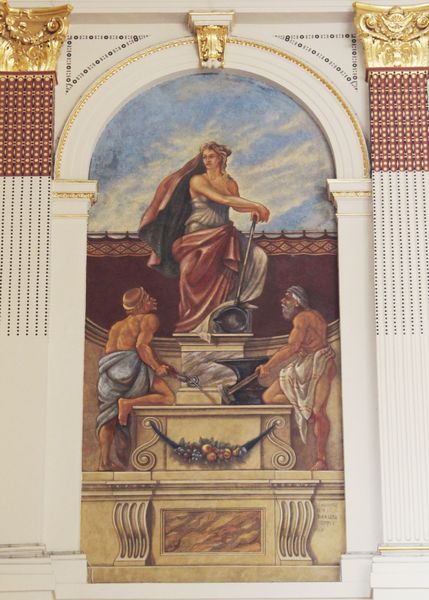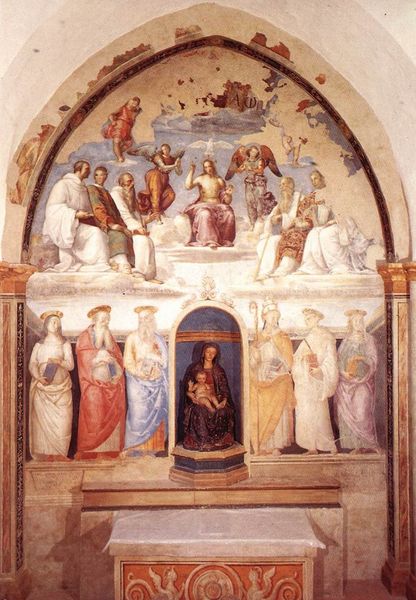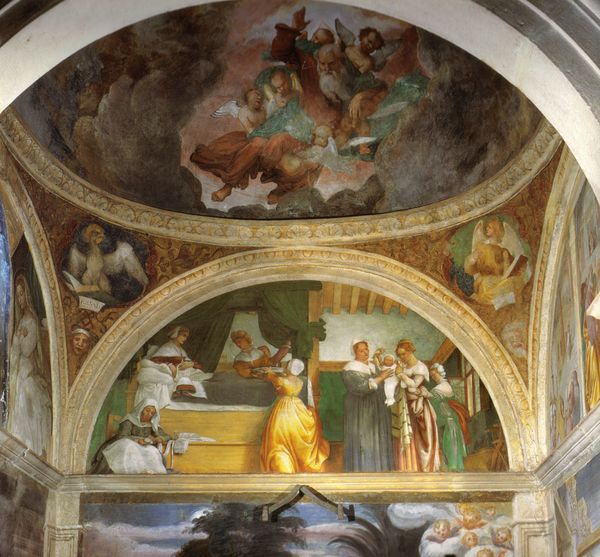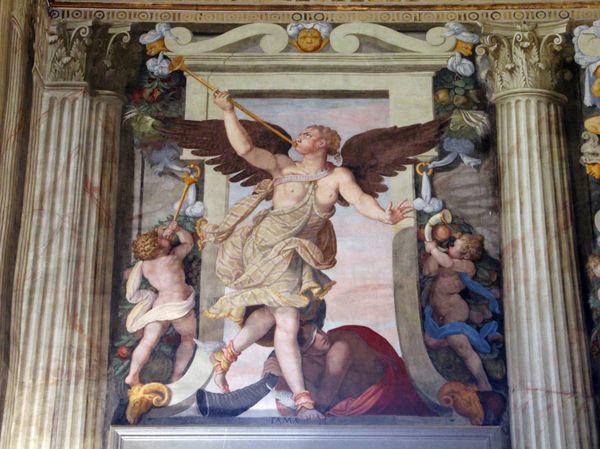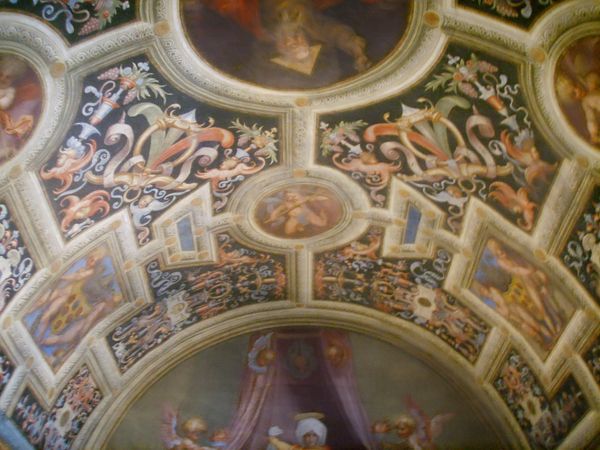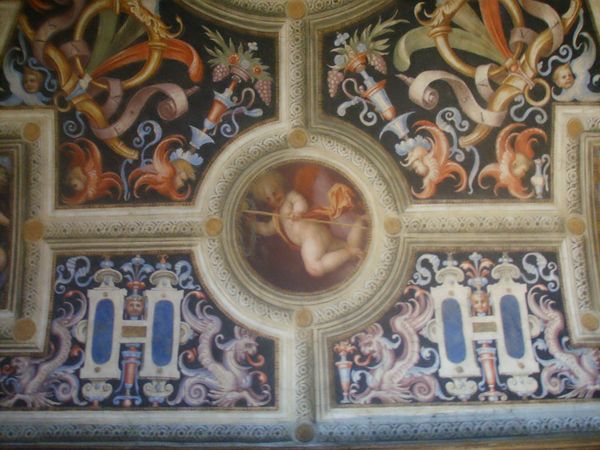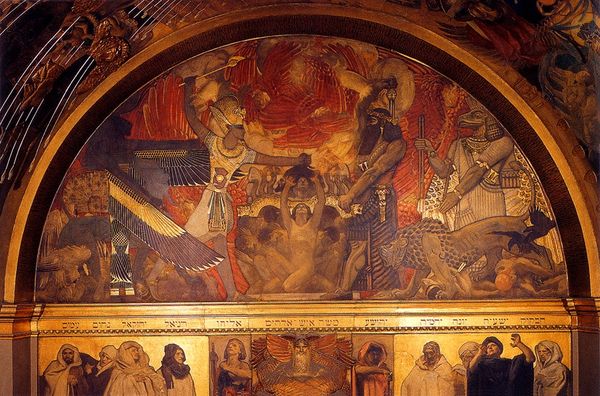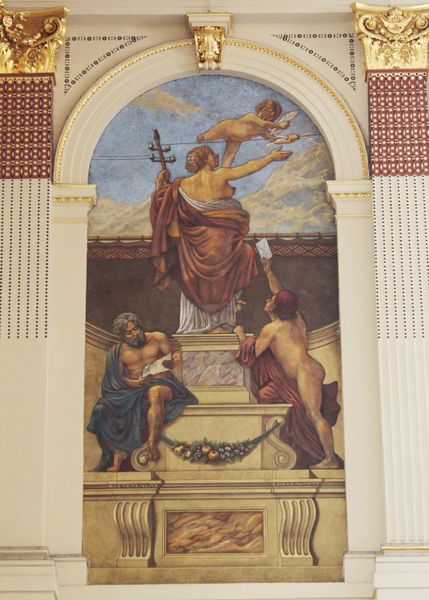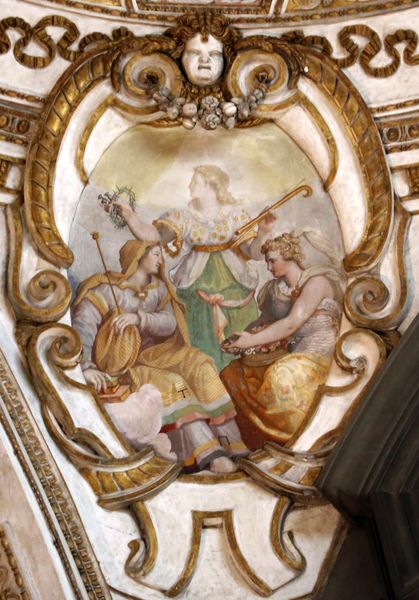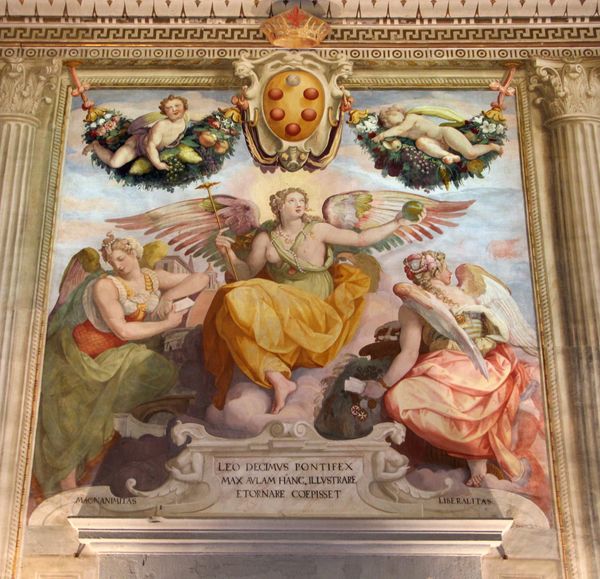
fresco
#
figuration
#
fresco
#
christianity
#
history-painting
#
italian-renaissance
Copyright: Public domain
Curator: Looking at Andrea del Castagno’s fresco, “Resurrection,” painted around 1447, one is immediately struck by its architectural framework supporting the depicted scene. It really plays with space and perspective. What is your first take on it? Editor: I find the almost theatrical quality captivating. The raw vulnerability of the risen Christ is so palpable—particularly in contrast to the angels beside him. You know, I'm particularly drawn to considering how gendered notions of power are at play here; there's a certain defiant assertion against traditional male authority, yet perhaps, conformity within religious expression? Curator: Absolutely, and thinking of that gendered dynamic is astute. We can't overlook that Castagno, working within the early Renaissance Florence, operated in a society rigidly defined by those gender norms and also one with defined roles for artistic production sanctioned by patrons. Religious institutions played a powerful role. Editor: I wonder about the narrative it presents and its intended audience at the time. The powerful physical form of Christ— almost daring compared to traditional representations— might challenge accepted notions, yes? I find it deeply human and raw. How might a contemporary feminist critique read it in contrast? Curator: A crucial point. It prompts reflection on societal interpretations and historical constructions around faith, power, and bodies. Now, the artist has strategically included some winged faces that appear to emerge directly from that background. They echo classical themes while still participating in a religious image of rebirth. What could this potentially signal for contemporary interpretations? Editor: Precisely! It introduces complexities about reclaiming a historical event within changing contemporary settings and power balances. It poses critical questions regarding whose perspectives shape accepted historical narratives, and for me, considering these various viewpoints— especially women’s historically marginalized position— enriches the meaning exponentially. Curator: Examining "Resurrection" offers an interesting look at historical narratives about not only faith, but representation and visual rhetoric during the Renaissance. Editor: Agreed, it underscores how reflecting on societal constructs shapes a meaningful understanding when confronting a work such as this today.
Comments
No comments
Be the first to comment and join the conversation on the ultimate creative platform.
